
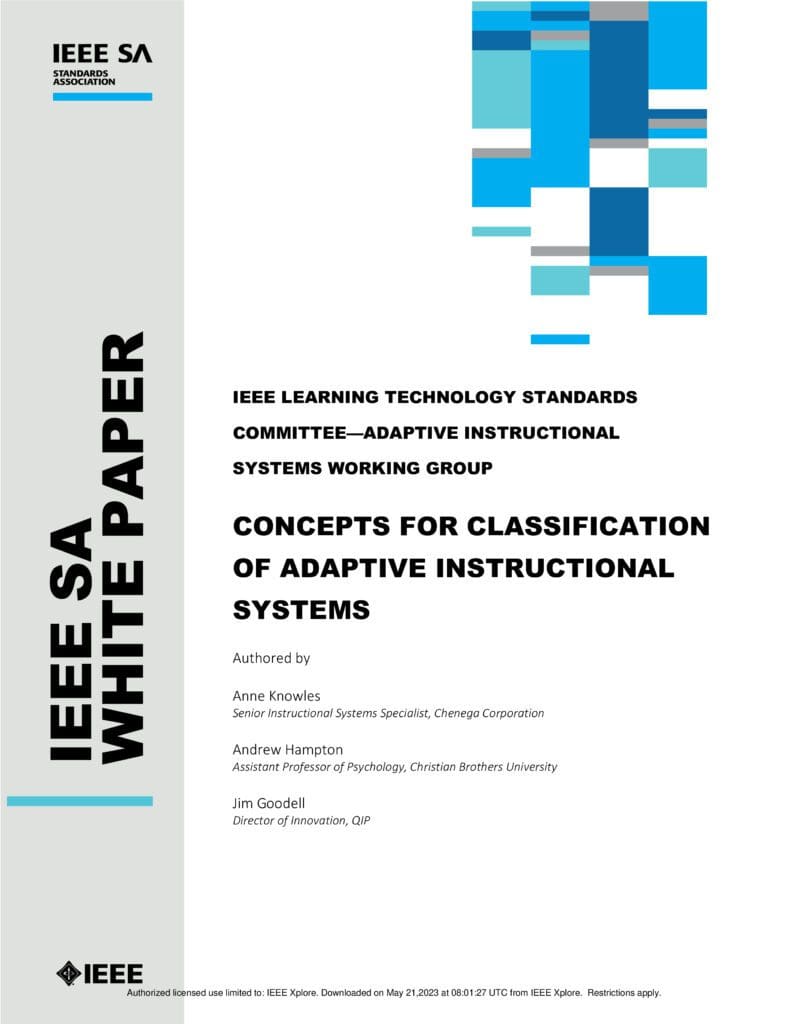
Concepts for Classification of Adaptive Instructional Systems
This white paper gives a brief introduction to conceptual classification of high-level functional components of adaptive instructional systems identified by the project group, and a proposed model for classifying AISs based on levels of adaptivity. It is offered as a frame for current and future standards development, baseline concepts to…

Security for Vehicle-to-Vehicle Communications for Unmanned Aircraft Systems
The security aspects of V2V communications in UAS addressed by IEEE P1920.2 are delineated in this paper. Those include the architecture of communication interfaces, authentication of V2V parties, cryptographic key management, and zero trust architecture.

Spectrum Considerations for Vehicle-To-Vehicle Communications for UnManned Aircraft Systems
This white paper provides a broad overview of potential communication technology and spectrum usage options for unmanned aerial systems (UAS). This paper particularly focuses on the detect and avoid (DAA) or collision avoidance (CA) use case, in line with the vehicle-to-vehicle (V2V) unmanned aerial vehicles (UAV) use case white paper…
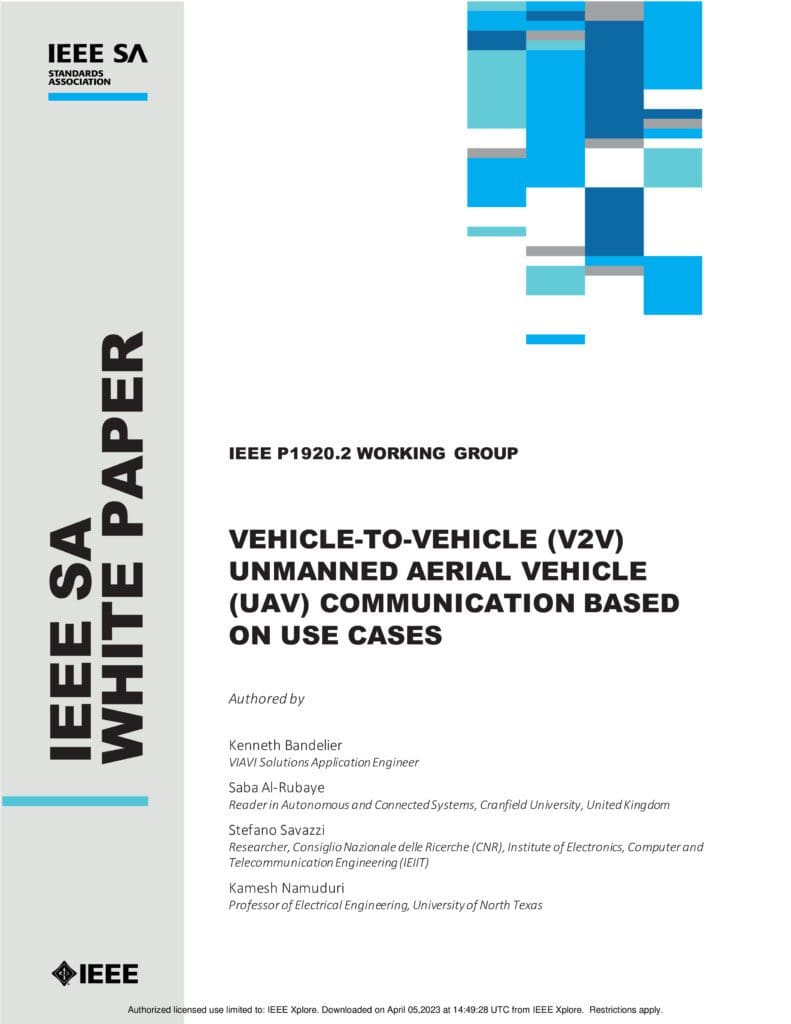
Use Cases for Vehicle-to-Vehicle (V2V) Communications for Unmanned Aircraft Systems
The purpose of this paper is to look at the various use cases for UAVs and how these different cases impact the ability of UAVs to communicate with other UAVs. This paper expects UAVs to be complementary to ground communication (General Aviation Manufacturers Association, executive summary) to fulfill their operational…
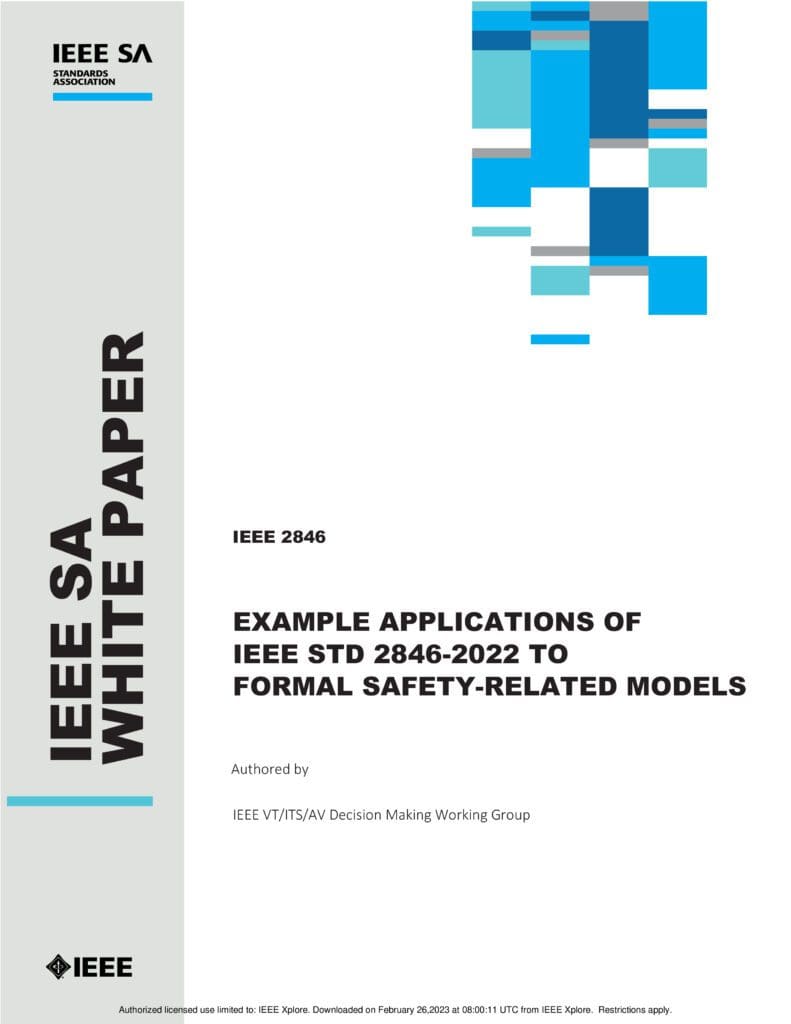
Example Applications of IEEE Std 2846-2022 to Formal Safety-Related Models
While automated driving system (ADS)-operated vehicles hold the potential for safety improvement compared to human drivers, the recognition that transportation will continue to entail some level of risk has to be considered. Human drivers rely on extensive daily experience in their interactions with other agents on the road, which helps…

The Functional Safety Terminology Landscape
This white paper, developed by the Functional Safety Standards Committee (FSSC), describes the landscape of functional safety terminology as used across multiple domains. It has been observed that there are multiple definitions for many of the terms--some of which are domain specific--and there is often an assumption that the terms…
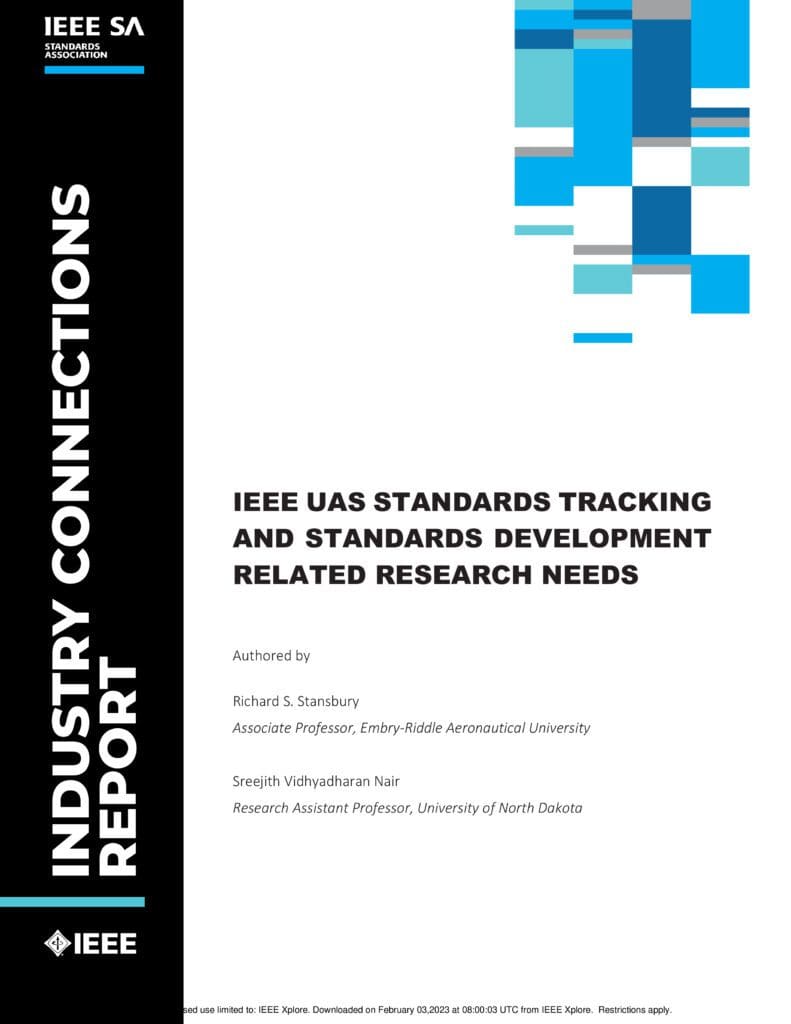
IEEE UAS Standards Tracking and Standards Development Related Research Needs
This paper discusses the findings of an integrated team that formed to identify current IEEE unmanned aircraft systems (UAS) standards and possible research gaps. The team identified the list of standards published by the IEEE and validated whether the standards had been captured correctly. The team also identified research gaps…

IEEE Industry Connections (IEEE-IC) Landmarks and Measurement Standards Comparison in 3D Body-model Processing
This white paper reviews the current standards landscape for three-dimensional body scanning, body landmarking, and measuring. International standards are compared and recommendations are made for a minimal set of landmarks and measurements (L&M) needed for several industrial use cases of 3D Body Processing such as fit and size estimation, retail,…
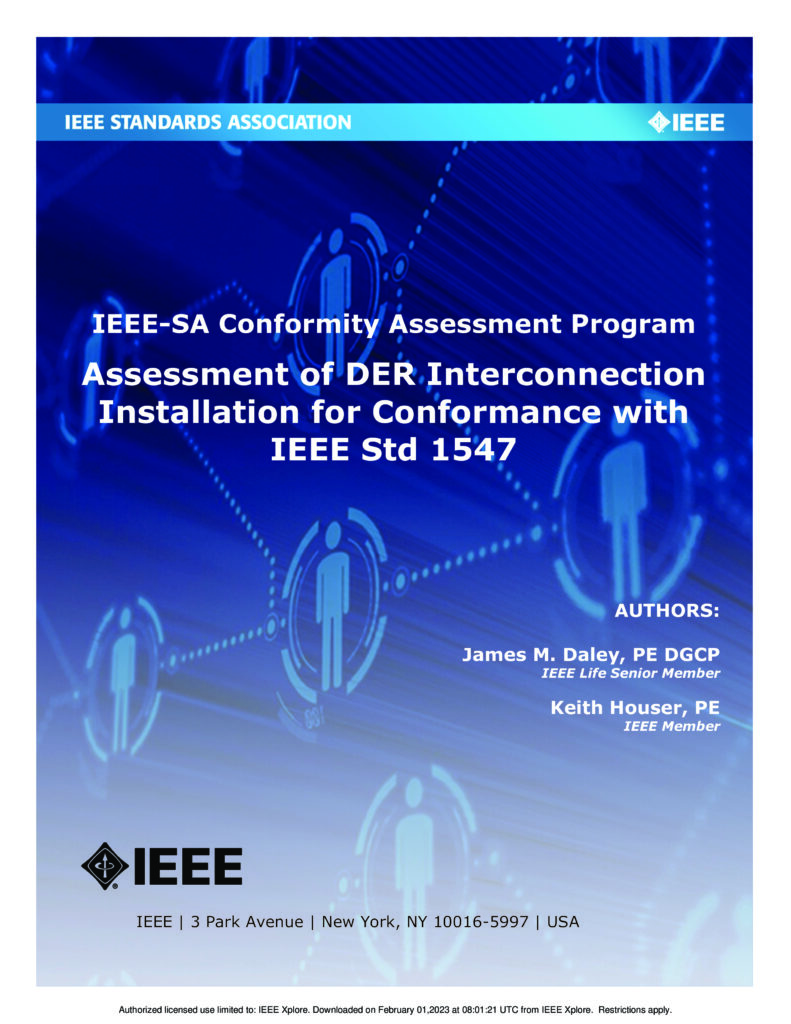
Assessment of DER Interconnection Installation for Conformance with IEEE Std 1547
Standards and codes establish the functional performance requirements of equipment interconnecting Distributed Energy Resources (DERs) with an Electric Power System (EPS). Nationally Recognized Testing Laboratories (NRTLs) evaluate equipment for safety and compliance with applicable standards and codes. Equipment meeting these requirements are then listed as suitable for their intended use…
